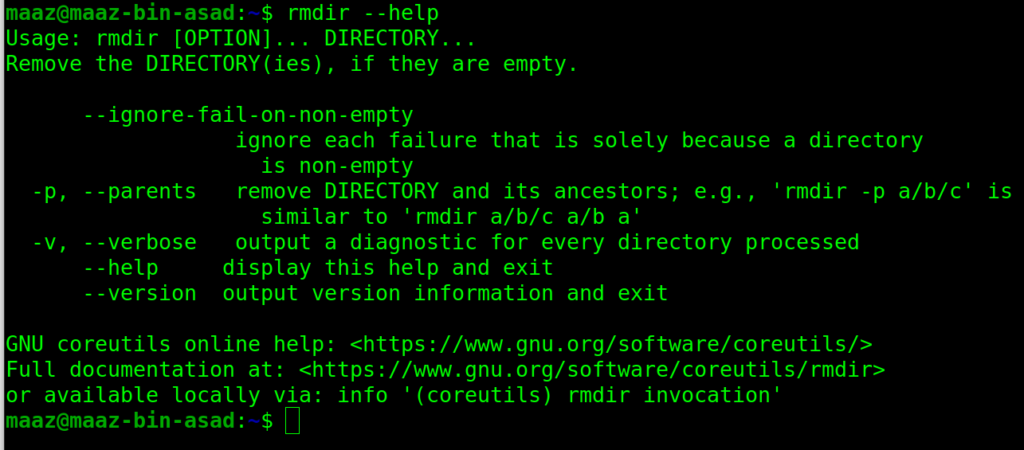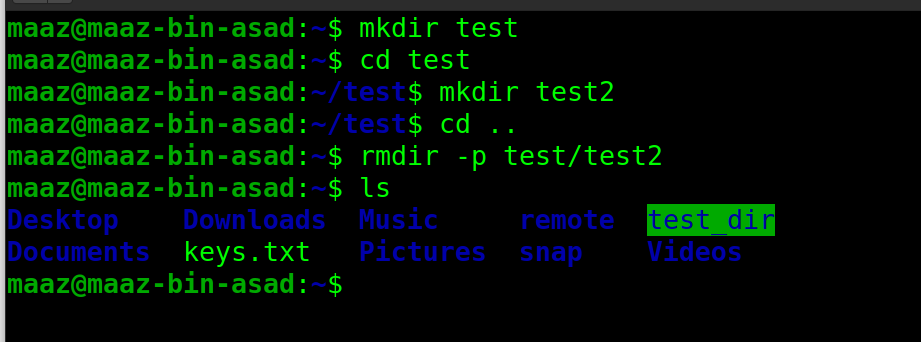Removing a directory or a file is a frequent operation that you do in your Linux machine. You may create a new directory and end up removing it completely from your machine. For GUI folks, it is quite easy to perform these operations. You just need to right-click on that directory and choose the option to remove it completely.
Another way of removing a file or directory on Linux is via the command-line interface i.e. the terminal. Although this is not the popular option as doing the aforesaid with the GUI is much easier, having knowledge of how to remove files using the command-line interface might be demanded by certain situations. One such scenario is when working with virtual machines where you have limited access to the GUI.
In this article, we will be discussing a few methods and options related to removing a directory from your system using the rmdir command.
What is a Directory?
A directory is just a set of files and sub-directories. In Linux, everything is structured into files and directories. This creates a tree-like structure, which makes it easy to understand the flow and structure of a particular project.
rm Command in Linux
rm is a contraction for "remove" in Linux. Among the vast array of Linux shell commands , the rm command comes under the subcategory of file management commands. The Linux command removes a file or set of files. If you enter the man rm command on the command line, it will explain how to use the rm command, its options and its arguments.
rmdir command
rmdir is an important extension of rm. The rmdir command is used to delete empty directories. The Linux command will delete the directory if and only if it is empty. The syntax and usage of the command can be checked using the following command:
rmdir --help

Using the -p Option
Every directory parameter is handled as a pathname in this option and all directories in the path will get deleted. Below is an implementation of this command:

Using the -v Option
Using this option with the
rmdir
command provides the message of directory deletion. Let’s see an example for this:

Deleting Multiple Subdirectories in the Same Directory
You can also use the
rmdir
command to delete many subdirectories simultaneously. Below is an implementation of this approach:

Conclusion
In this article, we discussed the rmdir command in Linux. Deleting a (set of) directory is a common task while working on Linux-based projects. This task can be accomplished by using the rmdir command. Please note that the Linux shell command only deletes empty directories and skips deleting non-empty directories. You can also delete multiple directories in the same directory using the rmdir command. Also, to get the deletion verification message, use the -v option.
People are also reading:
- How to List Users in Linux?
- How to Use the ln Command to Create Symbolic Links in Linux?
- How to Use the grep command in Linux?
- How to Extend Linux Partitions with Resize2fs?
- PING Command in Linux
- Linux Interview Questions and Answers
- ls Command in Linux
- pwd Command in Linux
- How to use mkdir command in Linux?
- How to Use cd Command in Linux?
- How to use CHOWN command in Linux?





Leave a Comment on this Post